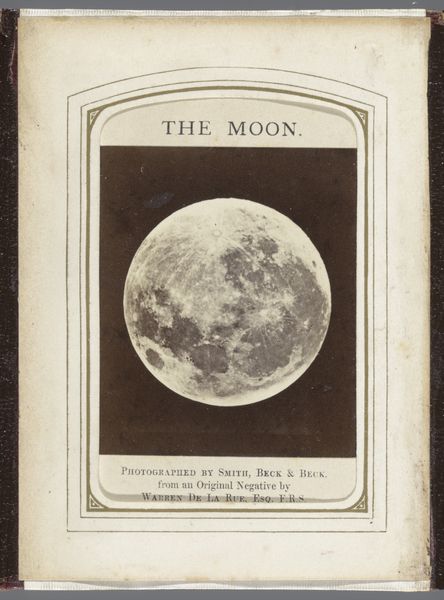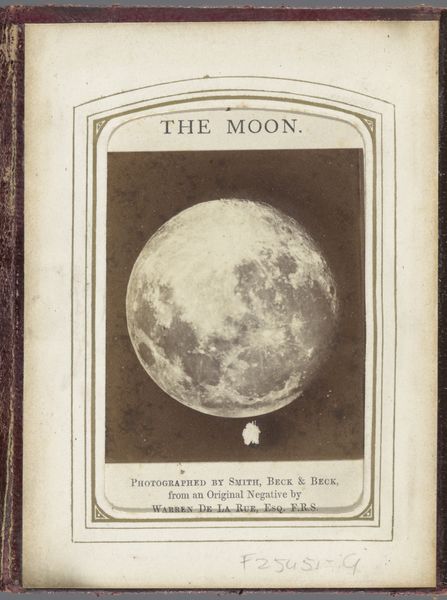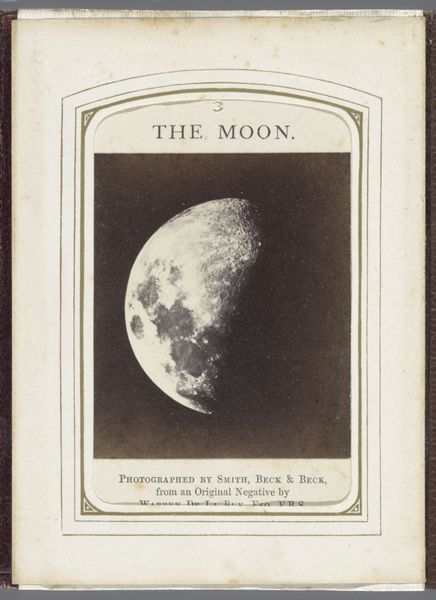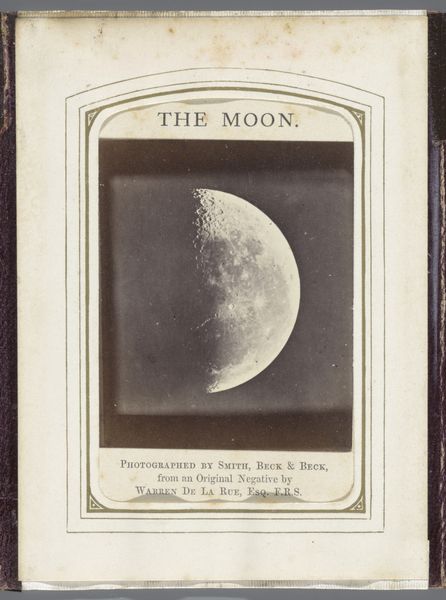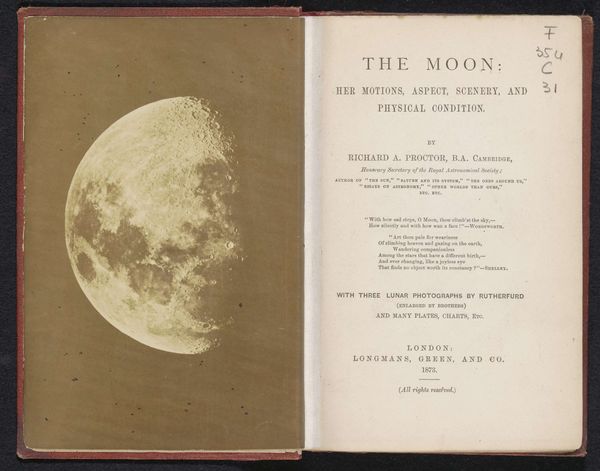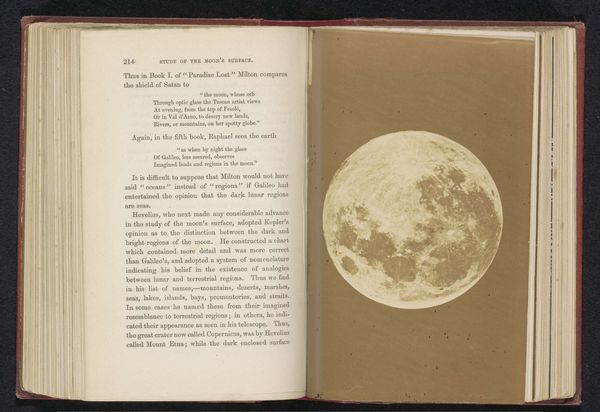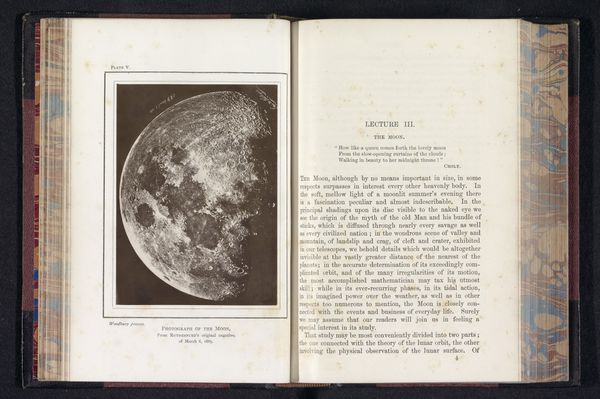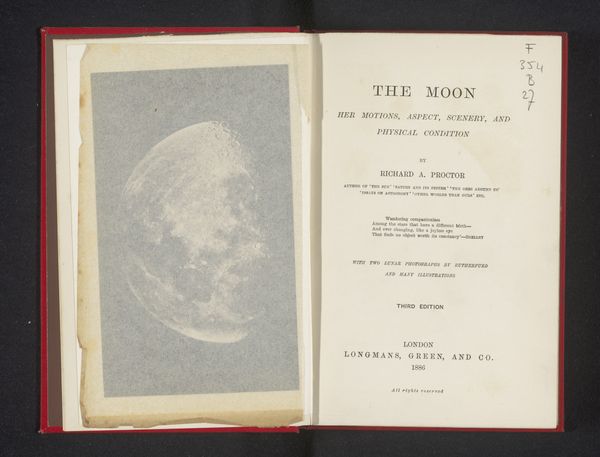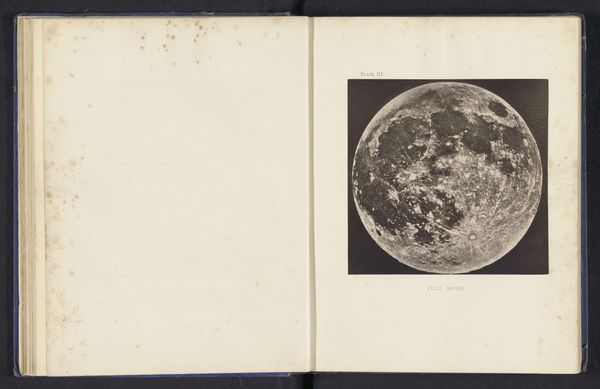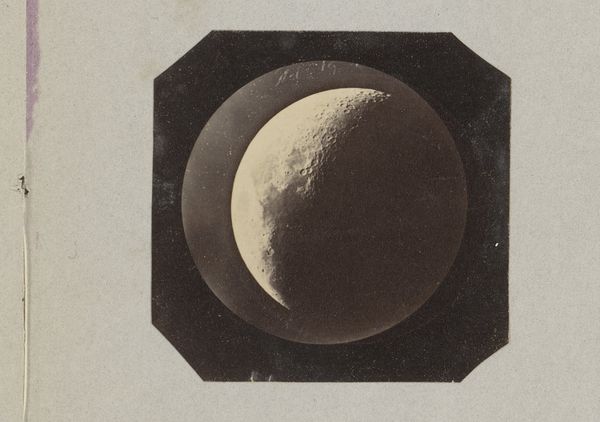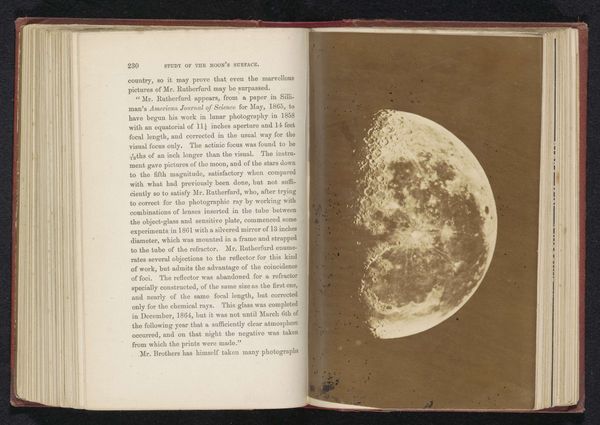
Dimensions: height 84 mm, width 53 mm
Copyright: Rijks Museum: Open Domain
Curator: The gelatin-silver print, "Wassende maan", taken sometime between 1866 and 1880, presents a photographic study of the waxing moon. The original negative was by Warren De La Rue, and the print was made by Smith, Beck & Beck. Editor: It's remarkably crisp. The contrast between light and shadow carves out the lunar landscape so dramatically, and there's something deeply serene and contemplative about the image as a whole. Curator: The moon has held a central place in human imagination across cultures. We’ve mapped mythologies, cycles of time, feminine energy and tides to this symbolic orb. Do you think photography changes the symbolic relationship with something so primal? Editor: Absolutely. This image coincides with evolving cultural perceptions of scientific advancement. Early photographs of celestial bodies collapse romantic views of the night sky into empirical study. There's a fascinating tension between objective representation and the continued subjective associations people hold. For instance, consider how its presence influenced space exploration efforts… Curator: Very well put. The photograph's romanticism is undeniably intertwined with this new precision, in the almost mystical quest to document the unseen in scientific study. I feel like I am encountering it on multiple levels: it is an artifact, an observation, a historical object, and a document. Editor: Exactly. As it presents an astronomical body, its own place in time and society begs inquiry. Who had access to images like this, and what narratives did they construct around technological development or science at this time? Curator: Indeed. "Wassende Maan" prompts reflection on the interplay between artistic representation and evolving understanding of the world around us, literally and metaphorically. It seems photography forever changed both art and science. Editor: It's remarkable how this relatively simple image manages to weave together art, science, and societal progress into such a concise package. It prompts one to look at progress with curiosity.
Comments
No comments
Be the first to comment and join the conversation on the ultimate creative platform.
